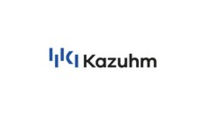Monday, November 26, 2018
How Kazuhm Is Reconnecting The Enterprise Cloud, With Tim O'Neal

If you're a large, enterprise company, in recent years, cloud computing has become an increasingly large--and expensive--piece of your information technology (IT) mix. Enterprise cloud budgets are growing astronomically as companies adopt many cloud techniques. However, most enterprises are overlooking an existing, in-house bank of computing resources--desktops and otherwise idle computers--which could help reduce the costs and give them more control over their cloud computing. To fix that, San Diego-based Kazuhm (www.kazuhm.com) has created software, which uses the same kinds of distributed computing techniques made popular in the consumer world by community projects like SETI, and applied that to the enterprise. We spoke to Tim O'Neal, the company's CEO and founder--and a technology veteran who had been at Intuit--on how the company is trying to help enterprises harness their existing, idle computing resources to help bolster their cloud computing efforts.
Explain what Kazuhm does?

Tim O'Neal: Kazhm was founded in 2017. We had an idea to recapture what we saw was a huge pool of unlimited corporate resources. If you look at companies in corporate America, they have a very heavy desktop population and user community, averaging 7,000 users at some companies. In our years in infrastructure, those computer resources have never been leveraged on the enterprise IT side. Kazuhm is recapturing the capacity in those desktops, creating a commercial grade, distributed computing platform based on that capacity. Beyond capturing the capacity of those desktops, we also found that we can do a pretty good job of recapturing the capacity of data centers, allowing them to be used for a cloud for companies who have lost control of their cloud usage, or are just looking for better ways to manage it.
How did the idea for the company come about?
Tim O'Neal: I've been a computer junkie and geek since I was a kid. I've been involved in a number of side projects over the years, including building my own gaming rigs, running SETI on my home PC, and so on. We had a notion that gosh, if those communities like SETI and Blink can amass millions of users, why can't you use those same techniques in the corporate world? They have an equally large community of corporate PCs, which are not doing anything when employees go home. Sixty to seventy percent of those desktops are doing nothing aside from idling. After my personal experience with community grid projects, I thought there must be a corporate spin to bring back those resources for companies. The concept of a community grid is not a new one. What's unique about us, is that there hasn't been modern, commercial technology which companies could subscribe to an implement in their corporate environment. They never had that ability before.
Is there any savings from using in-house resources, given the energy costs and optimization in most cloud data centers?
Tim O'Neal: Absolutely. In fact, our mantra right now, is to look at the cloud as just another data center. You still have engineering running it. I have been fortunate to have a team under me, which had been personally consuming the cloud in enterprise IT, and we always had a mix of cloud and data center resources. Hybrid cloud is pretty popular. If you look at it, there are petaflops in the office that have never been looked at. The aha moment was, if we can turn that on, we can turn that into capacity pools. The earliest applications use Apache Spark, and that brings back batch processing workloads back into desktops. For enterprises, some of who are spending millions in cloud spend, it's pretty compelling to look at this.
How difficult is it to make those desktop PCs part of your cloud?
Tim O'Neal: We try to make it really easy. They sign up through a web portal, online, and they create a resource pool. We make sure that going into a Windows environment, we're enterprise IT and corporate friendly. They just grab an install package MSI, and using SCCM or GPO they distribute that to corporate PCs. There's a similar installer for Linux, and going beyond the workstations and into the data center, we use Ansible to push the products out to those endpoints.
What's your background?
Tim O'Neal: I've been in the enterprise IT area for awhile now, twenty plus years. I've worked for both large and small companies. When I was at Intuit, I was Director of Operations for their healthcare division, before I got involved in data center consolidation. That was probably around 2008 and 2009, and Intuit had lots of data centers. They had probably 20 or 30. We worked on consolidation with business units, and did that for Bridgepoint Education and smaller companies, where I actually drove a lot of cloud migration stuff. I am a big fan of not getting locked in, looking at what services and vendors are there, and going multi-cloud when you can. Years of my career have been driving efforts like that. I also spend a chunk of my career in software development, working on enterprise applications. I have been lucky to have been around both parts of corporate IT and application development teams, and on the infrastructure side. That's how I formed and shaped this idea, to go back and recapture and create new utility computing resources for the enterprise.
With all the complexity of the IT environment, how do you convince customers to add one more piece into this puzzle?
Tim O'Neal: There are many compelling elements. We've gotten a really, really powerful response from the C level guys, from the business side through executives in IT, to the engineering community. The engineering community is fascinated by the horsepower we can use. On the flip side, organizations are looking for any kind of reduction of costs and ways to reduce cost pressures. The retailers we talk to are really interested in lighting up this massive capacity, for next to nothing. The competitive advantages of doing this are very exciting, and we get a powerful response from both audiences. Both the management side and engineering side are excited about what we do, because of cost savings on one side, and from the capacity and security and other elements that come with it. There are multiple values there. They also like that we've got commercial software, having come out of that space, and that we meet certain expectations of that software. They want us to be ready for security, for workload security, reporting and analytics, and all happening in a client controlled environment. That makes it very easy for them to see the high value proposition, and try us out as a new company.
How has the startup experience been for you versus Intuit?
Tim O'Neal: This is my second experience in a startup. I started a company back in 2005, a very traditional kind of startup, where we had found angel money and had gone through traditional funding. That was a very different experience. Here, we aligned with Analytics Ventures, and came into their studio model. It's been, honestly, amazing. The value I've had with our seed investor being Analytics Ventures and their studio, with their support team, and the facility really has let us work on building our business, and not worrying about other stuff. It has allowed us to focus on the product, and hiring engineers, and getting operationally ready. That's the thing that has felt similar to what is in the corporate world, but which you don't expect in starting a company. I think who we chose as an investor was the right choice for us, to get us to maximum velocity quickly, through ideation to build, test, and market. It's been really great.
Thanks!